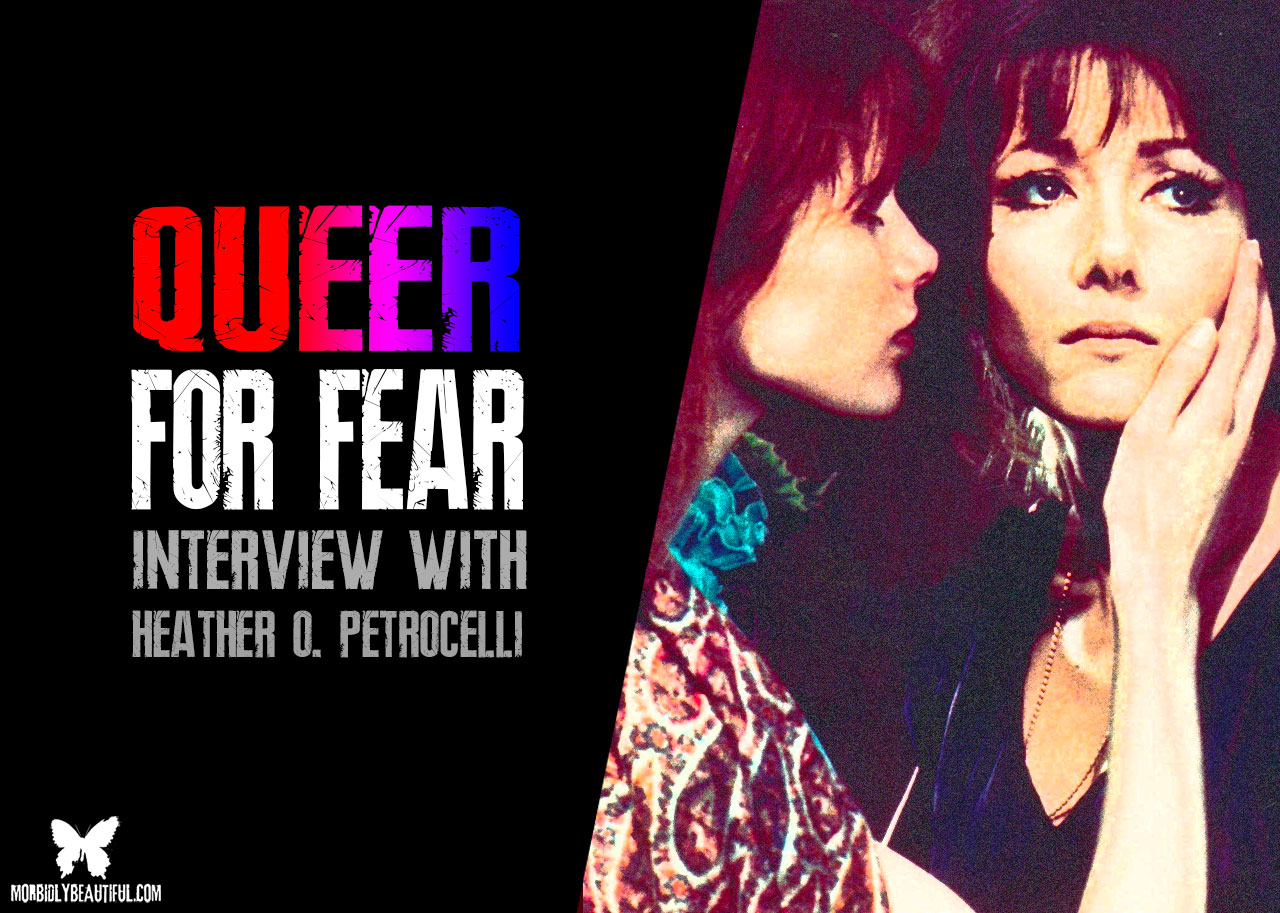Queer for Fear: Interview with Heather O. Petrocelli



An epic endeavor is currently underway at the Manchester Centre for Gothic Studies at Manchester Metropolitan University. It is a study hoping to break barriers and records. Ferocious horror fan and PhD researcher Heather O. Petrocelli is in the midst of collecting countless opinions, thoughts, and habits of those in the LGBTQ+ community that are queer for fear!
That’s right, an unprecedented amount of LGBTQ+ horror fans are taking the time to sit down and have their voices heard.
I was so intrigued with (and thankful for) Heather’s study, and her enthusiasm to take on this project, that I felt the need to reach out and ask a few questions. I mean, who doesn’t want to know more about the individual who wished to initiate this groundbreaking idea?
I came out when I was twelve, so all of my adolescence was spent somewhat isolated as an “out” lesbian — and a “weirdo,” which was often signaled by my passion for horror films. Upon attending university and traversing young adulthood, I somehow found others to add to my queer community, others who shared similar childhood stories, proclivities, and personal connections with horror film. From San Francisco’s Midnight Mass movie series in the late ’90s to Portland’s Queer Horror screenings of today, I have spent much of my life laughing, shrieking, gasping, and jumping at horror films with queer audiences.
This PhD dissertation research is borne out of a desire to better understand this community of horror-loving queers, a vibrant queer fandom culture that exhibits a distinctive engagement with horror film. I want to investigate and understand queer (an often invisible or marginalized community) fans of horror film so they have voice and visibility in academia across both queer and gothic studies.
Queers are unequivocally underrepresented in horror, even though horror is unequivocally queer. I’m old enough (what’s up, GenXers) to know that representation of marginalized communities, including the LGBTQ+ community, in horror films is actually better than it used to be. However, all marginalized communities still need better representation both in front of and behind the camera. I want to see more types of queer characters in horror films, and I want to see horror films made by people who embody all stripes of intersectional queerness.
As new responses are still being received as I write this, I am forcing myself to exhibit control and not look deeply into the aggregated data yet. Essentially, I do not want to “learn” something from the data only to have that “insight” shift with new responses. With that said, I have definitely peeked and I am thrilled with both the number of submissions from horror-loving queers and the thoughtfulness in the responses.
My main/current thought about the responses is: I want more. I want the full spectrum of queer horror fans to have their voices included and for there to be a strong representation from all kinds of humans. My goal is for the data collected to have life and voice beyond my dissertation, so the more perspectives we capture now, the better.
I can’t remember what made me originally fall in love with horror. Ever since I was very young, I have been transfixed by the dark, gothic, and macabre. I have been drawn to horror films, books, images, cartoons, television shows, and toys as far back as I can remember. In those portrayals, I felt an affinity for and/or an attraction to the villains, monsters, creatures, and fiends—from the misread Wicked Witch of the West to the misunderstood Frankenstein’s monster.
I, too, felt different and misunderstood, not fitting society’s mold of “a girl,” as I rejected dolls and princesses, and embraced Dracula and the Prince of Darkness. It has been said that you don’t pick horror but that horror picks you, and I’m so grateful to have been chosen so early in life.
“Quid pro quo — I tell you things, you tell me things.”
Normally I resist answering any sort of “what’s your favorite” question. But since I have asked this on the survey, it only seems fair for me to have to answer, too. I love horror films so much that trying to choose only a few pains me. (In fact, if I were taking my own survey I’d select “love” on most subgenres/categories of horror.) There are the films that permanently scarred me after seeing them as a child (The Exorcist) and the films that blew my mind as an adult (Martyrs). There are the films that I revisit often (Dead Alive), the films that rocked my world (Suspiria 2018), the films that hooked me into the genre (The Bride of Frankenstein), the films that turned me on (The Hunger), and the films that sparked my love of international horror (Godzilla).
Mothra vs. Godzilla (1964): I was reared on creature features and I love creature features. What’s not to love about this film that features the first female kaiju monster who is an ancient immortal moth goddess. Mothra’s weakness is her kindness to humankind—she should know better.
A Nightmare on Elm Street 4: The Dream Master (1988): If you were being pitched on the concept for the follow-up to Dream Warriors, you would think they were nuts after being told some of the details: an unknown Finnish director, a flame-pissing hellhound, a Gregor-esque cockroach transformation, a film-within-a-film scene, a waterbed death, pizza with animated meatball faces, and Linnea Quigley birthing herself out of a giant Freddy chest. They were nuts, and it worked—and teenage me loved it.
Alien Resurrection (1997): This film is queer-as-fuck and I’m still here for every moment of it. This film is predicated on the rejection of motherhood for survival and gives me the May-December lesbian love story between a human-alien hybrid and an android that I never knew I needed.
Bride of Chucky (1998): Three easy reasons to love: horror, humor & Jennifer Tilly.
Follow Us!